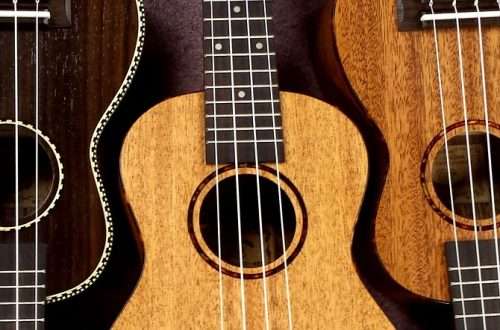
History of the djembe
Djembe is a traditional musical instrument of the West African peoples. It is a wooden drum, hollow inside, made in the shape of a goblet, with skin stretched on top. The name consists of two words denoting the material from which it is made: Jam – a hardwood that grows in Mali and Be – goat skin.
Djembe device
Traditionally, the djembe body is made of solid wood, the logs are shaped like an hourglass, the upper part of which is larger in diameter than the lower one.  Inside the drum is hollow, sometimes spiral or drop-shaped notches are cut on the walls to enrich the sound. Hardwood is used, the harder the wood, the thinner the walls can be made, and the better the sound will be. The membrane is usually the skin of a goat or zebra, sometimes a deer or antelope. It is attached with ropes, rims or clamps, the sound quality depends on the tension. Modern manufacturers make this tool from glued wood and plastic, which significantly reduces the cost. However, such products can not be compared in sound with traditional drums.
Inside the drum is hollow, sometimes spiral or drop-shaped notches are cut on the walls to enrich the sound. Hardwood is used, the harder the wood, the thinner the walls can be made, and the better the sound will be. The membrane is usually the skin of a goat or zebra, sometimes a deer or antelope. It is attached with ropes, rims or clamps, the sound quality depends on the tension. Modern manufacturers make this tool from glued wood and plastic, which significantly reduces the cost. However, such products can not be compared in sound with traditional drums.
History of the djembe
The djembe is considered the folk instrument of Mali, a state founded in the 13th century. Where did it spread to the countries of West Africa. Djembe-like drums exist in some African tribes, made around 500 AD. Many historians consider Senegal to be the origin of this instrument. Local residents have a legend about a hunter who met a spirit playing the djembe, who told about the mighty power of this instrument.
In terms of status, the drummer is second only to the leader and the shaman. In many tribes he has no other duties. These musicians even have their own god, which is represented by the moon. According to the legend of some peoples of Africa, God first created a drummer, a blacksmith and a hunter. No tribal event is complete without drums. Its sounds accompany weddings, funerals, ritual dances, the birth of a child, hunting or war, but first of all it is a means of transmitting information over distances. By drumming, neighboring villages communicated the latest news to each other, warned of danger. This method of communication was called the “Bush Telegraph”.
According to research, the sound of playing the djembe, heard at a distance of 5-7 miles, increases at night, due to the absence of hot air currents. So, passing the baton from village to village, the drummers could notify the entire district. Many times the Europeans could see the effectiveness of the “bush telegraph”. For example, when Queen Victoria died, the message was transmitted by radio to West Africa, but there was no telegraph in distant settlements, and the message was transmitted by drummers. Thus, the sad news reached the officials several days and even weeks earlier than the official announcement.
One of the first Europeans who learned to play the djembe was Captain R.S. Ratray. From the Ashanti tribe, he learned that with the help of drumming, they reproduced stresses, pauses, consonants and vowels. Morse code is no match for drumming.
Djemba playing technique
Usually the djembe is played standing up, hanging the drum with special straps and clamping it between the legs. Some musicians prefer to play while sitting on a recumbent drum, however, with this method, the fastening rope deteriorates, the membrane becomes dirty, and the body of the instrument is not designed for heavy loads and may burst. The drum is played with both hands. There are three tones: low bass, high, and slap or slap. When hitting the center of the membrane, the bass is extracted, closer to the edge, a high sound, and the slap is obtained by softly hitting the edge with the bones of the fingers.





